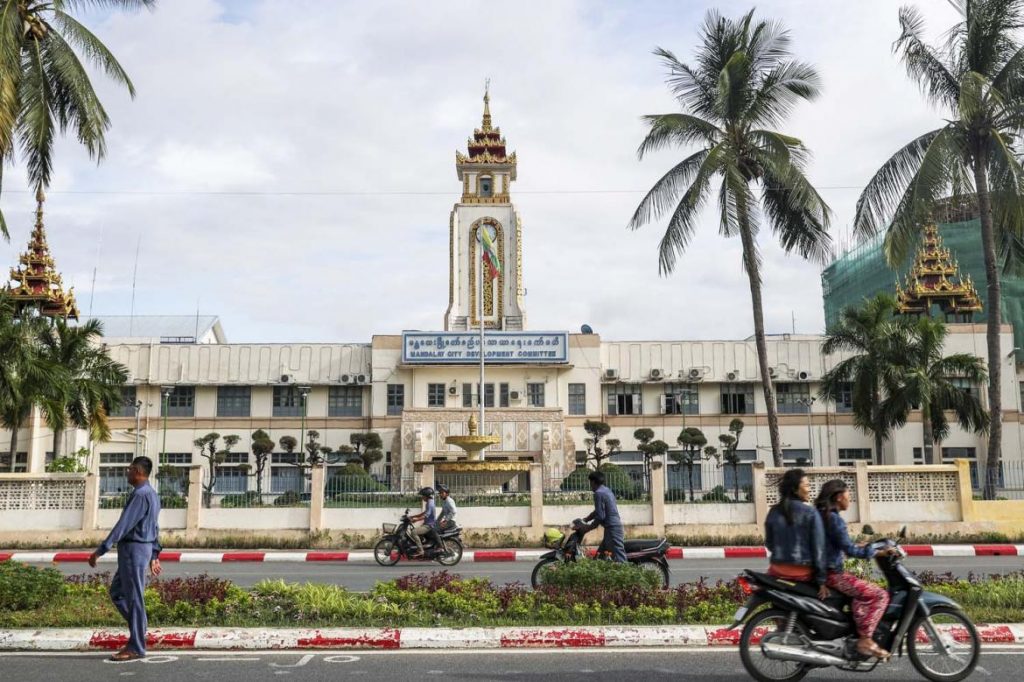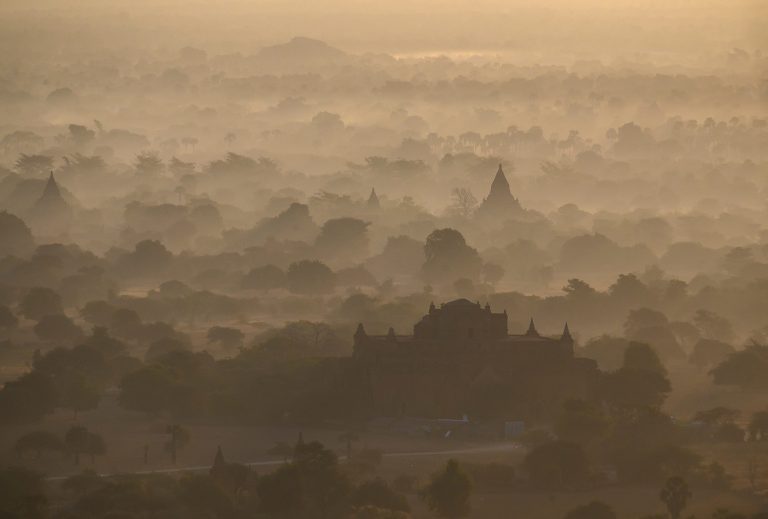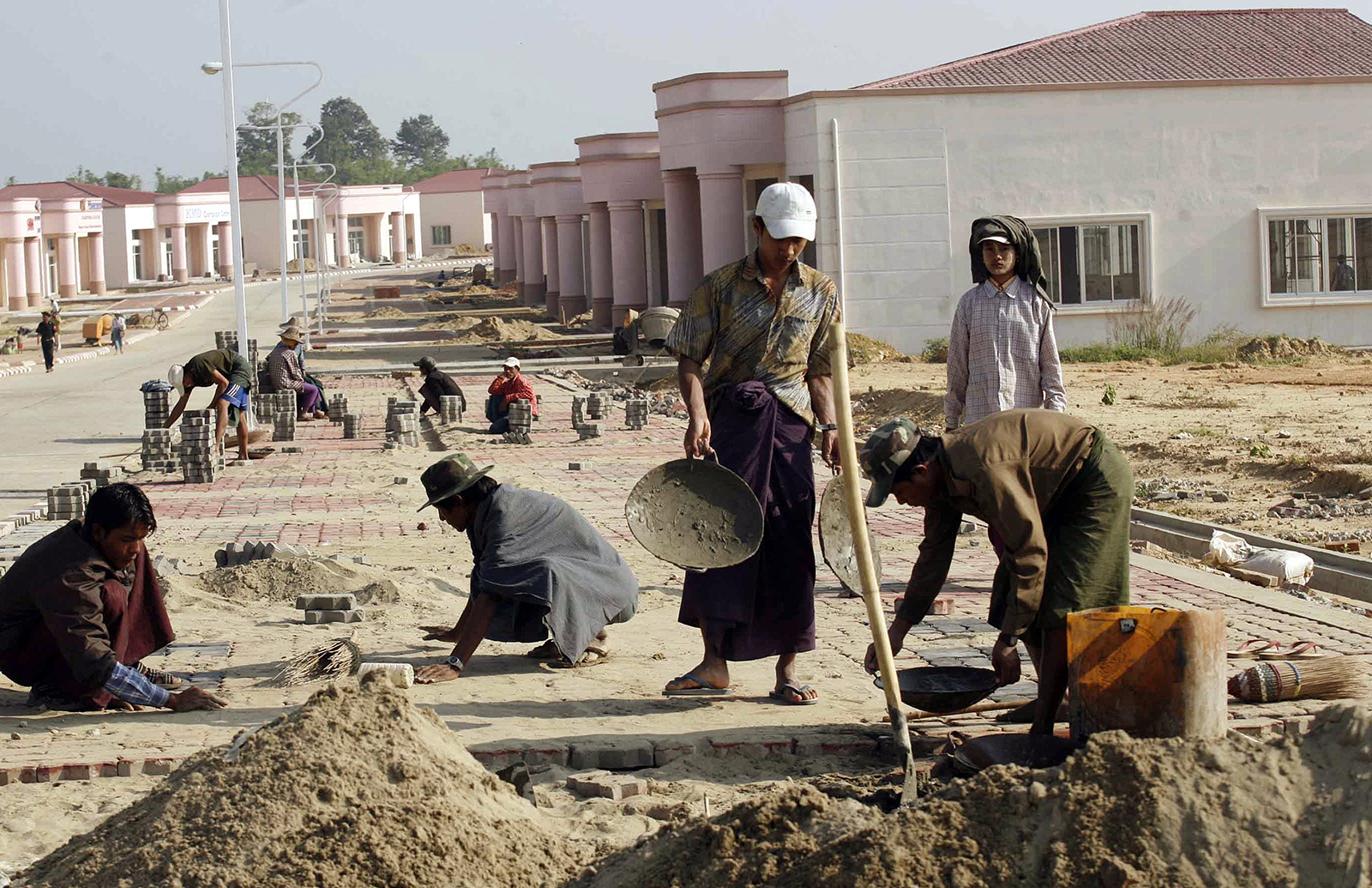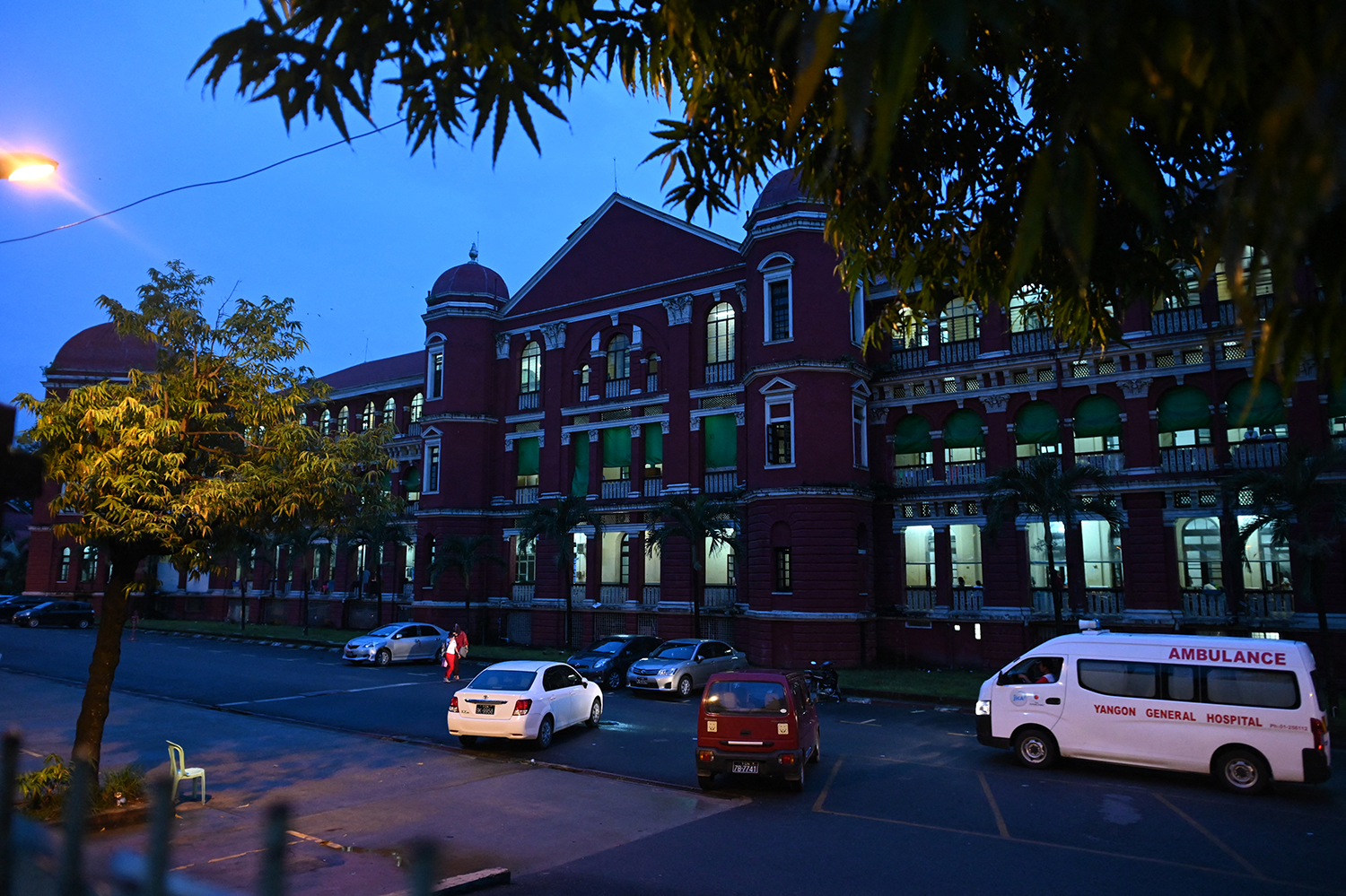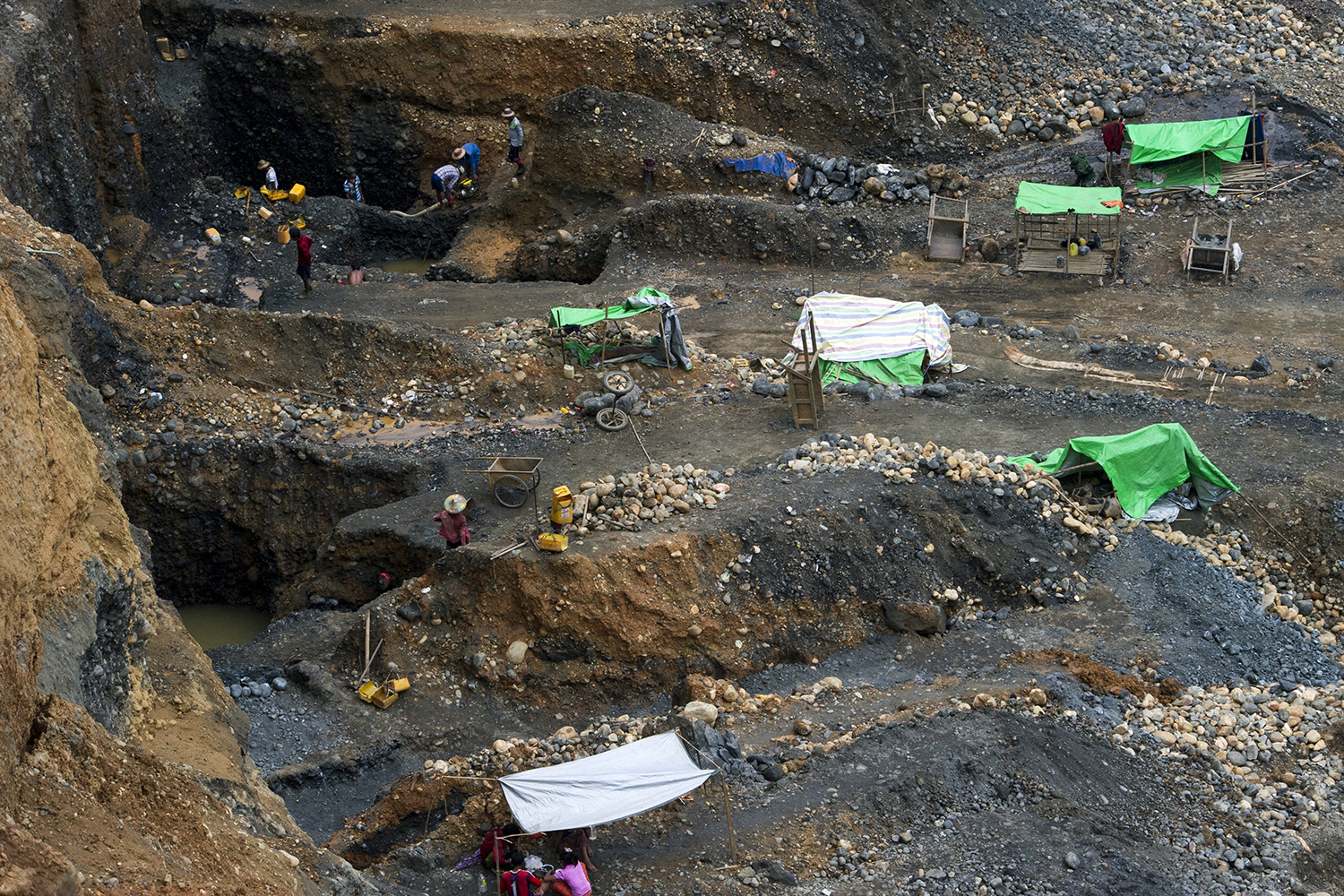An energetic mayor and revamped municipal authority are giving Myanmar’s second city a tech-based makeover, which is being embraced by residents tired of past mismanagement.
By HEIN THAR | FRONTIER
Photos NYEIN SU WAI KYAW SOE
“MANDALAY is like a Phoenix from ancient Greek mythology. Like the mythical bird, Mandalay will always rise and regenerate from the ashes,” the renowned author Mya Than Tint wrote in his book about the city’s history, When the wind blows from Taungthaman Lake, published in 1999.
He observed that Mandalay had twice risen from ashes. The first time was in 1945, after World War II, when much of the city was flattened by Japanese and Allied bombing raids, and the next in 1984, when the city was destroyed by fire. On both occasions, Mandalay had picked itself up, struggled into recovery and moved forward.
Since 2016, Mandalay has undergone another kind of resurrection. A legacy of mismanagement under successive post-colonial governments had turned the former seat of Burmese royalty, and capital of independent Burma before it was annexed by the British in 1885, into an unattractive sprawl with meagre services and few green spaces. Now, the city’s municipal rulers, along with many of the proud citizens among its population of more than 1.2 million, say that Mandalay is becoming the country’s “smart city”.
Mandalay, Yangon and Nay Pyi Taw were among 26 cities chosen to participate in the Association of Southeast Asian Nations Smart Cities Network when it was established at the ASEAN summit held in Singapore in April 2018. The scheme, promoted by Singapore during its chairmanship of the bloc last year, aims to use digital technology to meet the challenges posed by rapid urban growth in the region, such as ballooning populations fed by migration from rural hinterlands, climate stress and obsolete or outdated infrastructure, to improve the quality of life for urban residents and provide them with better services.
Support more independent journalism like this. Sign up to be a Frontier member.
A Smart City Action Plan for each city was presented at a workshop in Singapore in May 2018, and Mandalay nominated five areas to focus on: traffic management, road safety, public transport, parking and walkways, and water and solid waste management.
However, the objectives of the smart city network are vague. The targets of the action plans, which for Mandalay include installing “smart traffic lights” at half of the city’s intersections within two years, and in Yangon call for achieving a “100 percent” improvement of the streetscape in the downtown area by 2025, seem to have been freely chosen and in many cases lack precision.
Each city in the regional network has been left to draft its own plans, connect with international donors, private companies and investors, and decide what a “smart city” is in their national context. Yangon and Nay Pyi Taw have been shy of using the “smart city” label, but Mandalay has embraced it wholeheartedly.
In June, tech news site CIO.com ranked Mandalay among the top 10 “most promising” smart cities in ASEAN. The ranking was based on research by Singapore-based GovInsider, which covers government innovation, Kuala Lumpur-based tech driven platform The ASEAN Post, the McKinsey Global Institute and the Economist Intelligence Unit.
International support has helped Mandalay in upgrading its image. The Asian Development Bank and the Agence Française de Développement, an institution that supports the French government’s development activities, have provided money and technical expertise for a project to upgrade the city’s water supply, wastewater treatment and solid waste management systems. However, the most crucial factor for further progress may be a change in the city’s leadership.
Mandalay is the site of the palace of the last king of Burma and it may seem surprising that a city so closely associated with the country’s royal past aspires to be a flag bearer for “smart” urban development in Myanmar. It is more surprising, however, that a pioneering role is being played by the Mandalay City Development Committee, the city’s municipal government, which has long been scorned by residents because of mismanagement and rampant corruption.
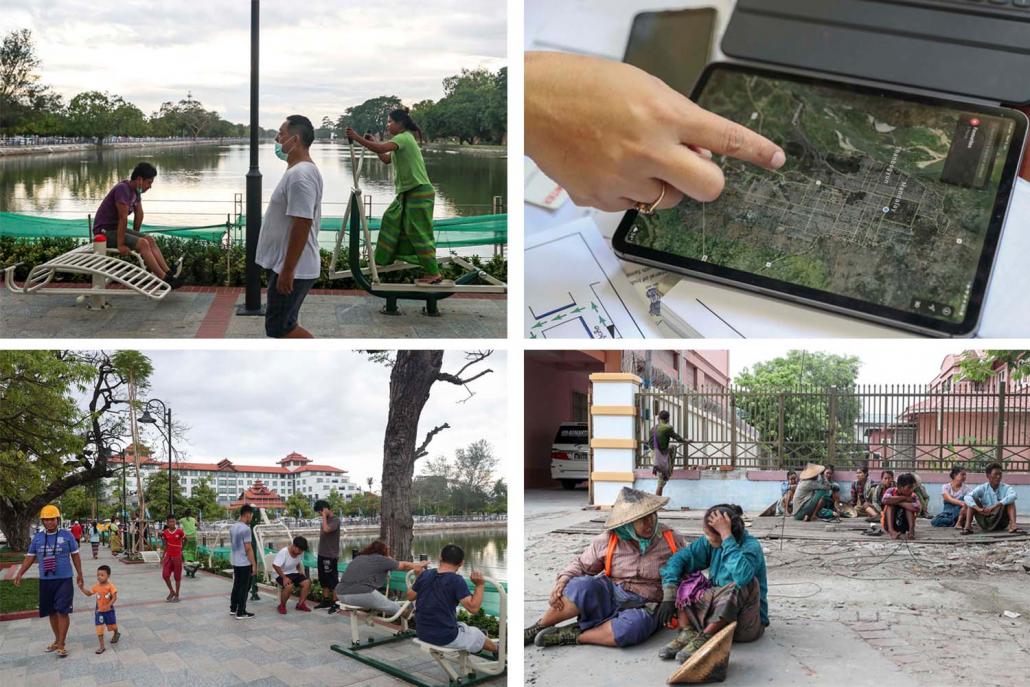
Nyein Su Wai Kyaw Soe | Frontier
From loathed to loved
Municipal bodies such as the MCDC and its Yangon counterpart, the Yangon City Development Committee, are the most autonomous sub-national bodies in Myanmar. This status is bolstered by their financial independence and ability to raise revenue through municipal taxes, service fees, business licences and property rentals.
However, the chairman of the MCDC, known as the mayor, is appointed by the Mandalay Region government, which is itself appointed by the president. In common with other municipal governments with the exception of the YCDC, only a minority of executive committee members are elected, and then only through an indirect system in which one person in each household has a vote.
The MCDC was formerly loathed because of incompetence and graft and the tradition that saw important posts on the executive committee taken by former Tatmadaw officers, said writer Suu Nget a resident and native of Mandalay.
He said there was a marked improvement after Dr Ye Lwin, an eye specialist, was appointed mayor by Mandalay chief minister U Zaw Myint Maung after the National League for Democracy took office in 2016. The MCDC’s nine-member executive committee also includes a writer and journalist, an engineer, a legal expert and an IT specialist. Ye Lwin and most members of the committee are not NLD members.
“In the past, no one wanted anything to do with the MCDC, but since the new mayor was appointed the situation completely changed and now no one dares to criticise the municipal government because if they do other residents will scold them,” Suu Nget said.
There is now a stark contrast in the way that residents of Mandalay and Yangon seem to regard their respective municipal governments. While the YCDC’s Facebook page is riddled with flak from disgruntled Yangon residents, the MCDC’s page is heavy with compliments. The Mandalay mayor (or his staff) also responds to many enquiries and complaints from city residents via his Facebook page, earning trust and plaudits in the process.
“If you see or experience something unseemly [in Mandalay], you can write under the mayor’s page and it can be corrected,” commented Facebook user Wai Wai Kyaw.
A YCDC officer who asked not to be named admitted to Frontier that the Yangon municipal government’s performance had lagged behind Mandalay’s, adding, “We [in Yangon] need a leader who is more decisive and flexible, like in Mandalay.”
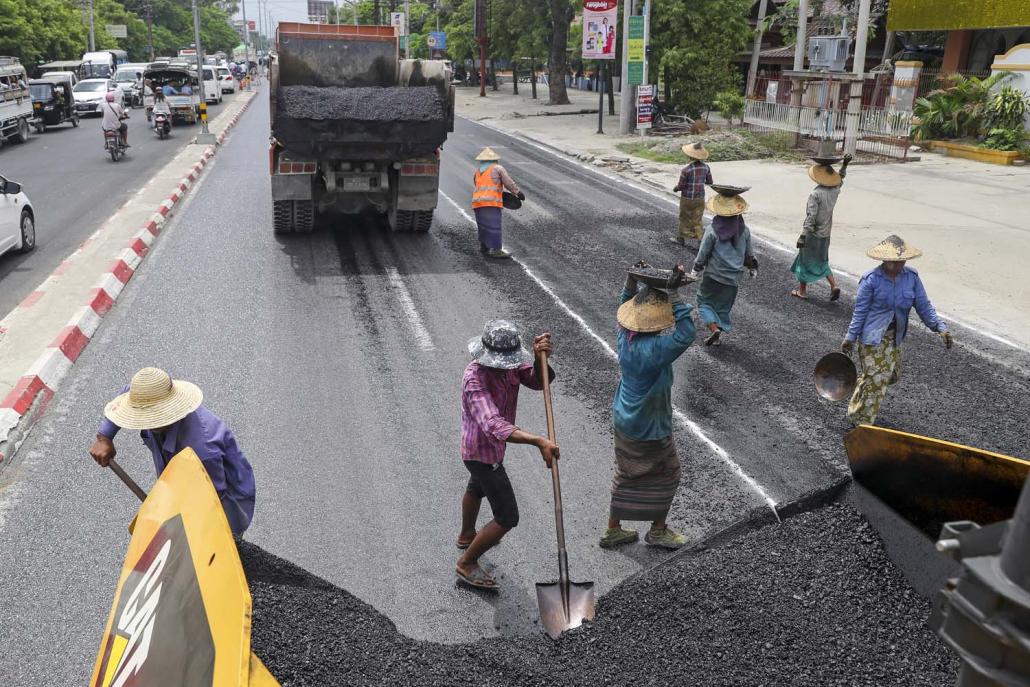
Labourers employed by the MCDC re-surface the Theik Pan road in Mandalay. (Nyein Su Wai Kyaw Soe | Frontier)
Chastened directors
Since taking office, the Mandalay mayor and the MCDC executive committee have embraced a work plan that sets priority tasks for each year.
In 2016, they focused on upgrading roads, street lighting and other essential infrastructure, improving rubbish disposal and making the city cleaner. In 2017, the performance of MCDC employees was assessed and this resulted in promotions and dismissals.
In 2018-2019 the municipal authority has been concentrating on making Mandalay a “smart city”, reflecting its accession to the ASEAN-wide network, said former journalist U Kyaw Yin Myint, an MCDC executive committee member and its spokesperson.
Kyaw Yin Myint said the mayor and executive members agreed in its second year on the need to reorganise the MCDC as a necessary step in building a better Mandalay. The decision coincided with the release by the Union government in July 2017 of the Civil Service Reform Strategic Action Plan. Mayor Ye Lwin called a meeting of MCDC officers and told them frankly that he would sack anyone who did not cooperate with the action plan.
MCDC executive members were each asked to contribute questions, which the mayor vetted, for exams held later in 2017 that personnel needed to pass to be promoted.
“Previously, there was corruption in promotion examinations and some were paying tens of millions of kyat to be promoted,” said Kyaw Yin Myint, claiming that this had been successfully curbed.
“Most of the [departmental] directors at the MCDC were former Tatmadaw officers but those who did nothing and merely pretended to be working were dismissed by the mayor,” he told Frontier.
A total of 42 MCDC employees, including senior staff, have been dismissed since 2016, according to internal records shown to Frontier. Outstanding employees have been promoted or rewarded in other ways over the same period.
U Maung Maung Myint, the head of the MCDC’s planning department, said Ye Lwin had come from a wealthy family and was free of corruption. “He is an educated man and the heads of departments cannot fool him; they were chastened by the new mayor,” he said.
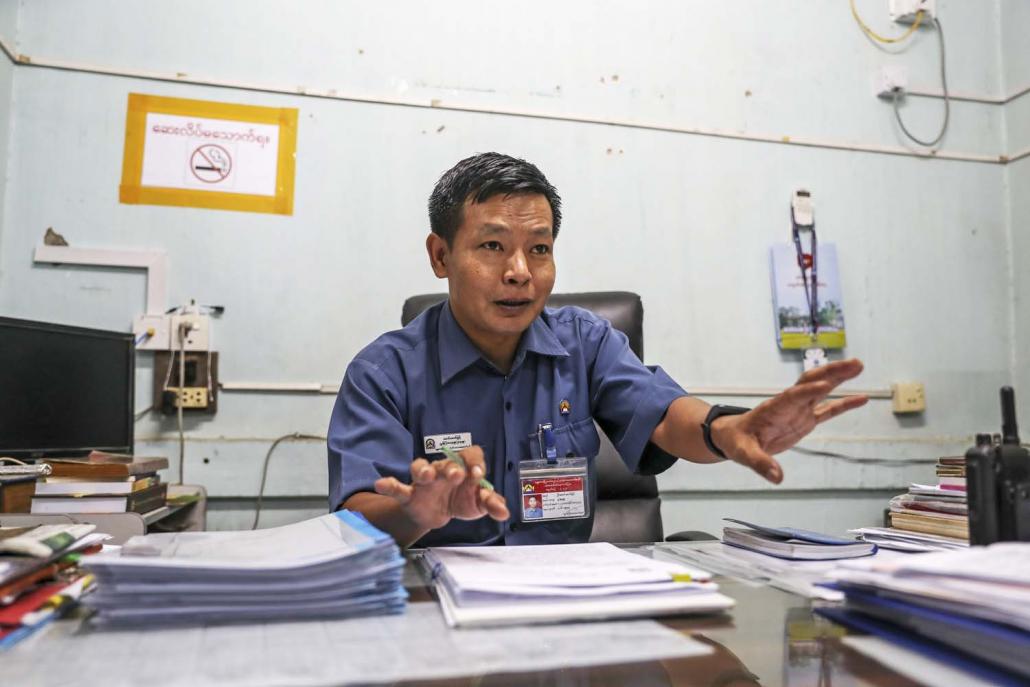
U Maung Maung Myint, head of planning at the Mandalay City Development Committee. (Nyein Su Wai Kyaw Soe | Frontier)
More tech, more tax
The ASEAN community has welcomed Mandalay’s bid to become a smart city, said U Ye Myat Thu, an MCDC executive committee member and the Chief Smart City Officer chosen to represent the city in the regional network. “We did not start out with the aim of making Mandalay a smart city because there were so many problems, but we came to learn that they must be solved through technology,” he said.
Ye Myat Thu is an IT expert whose claim to fame is inventing the Zawgyi Burmese language encoding system, but this legacy is controversial. Zawgyi was released in Mandalay in 2006 and became the most popular way of rendering Burmese text on phones and computers, despite deviating from Unicode, the international standard for language encoding, in a way that many tech specialists say has substantially held back the country’s IT development.
Among a raft of recent technical innovations in the municipality, in 2018 GPS devices were fixed to the city’s garbage trucks and the waste collection system was coordinated from a control centre that required the vehicles to operate to a strict timetable. A threshold was also applied to the loads trucks were required to carry to the dump in a change that saved money because drivers had previously been paid for each trip and some had been taking frequent trips with under-loaded vehicles. Drivers are liable to be fined if they breach the rules introduced under the upgraded collection system.
Water supply management was upgraded with the installation of automatic meter reading technology that provides a central office with real-time information on consumption and any leaks that occur. Monitoring is easier and more comprehensive, trouble-shooting is more efficient and billing is more accurate.
Traffic management has been improved by the installation at road junctions of the Sydney Coordinated Adaptive Traffic System, which was developed in Australia and is being used at about 42,000 intersections in more than 1,800 cities in 40 countries, including Singapore. SCATS automatically adjusts the time between signal changes by detecting variations in traffic density using cables buried in the road. Traffic incidents, and the licence plates of offending vehicles, are automatically recorded by camera.
MCDC data says the system, which can be operated manually if necessary, has been installed at 60 percent of road junctions within the city.
The introduction of the system is one reason why the MCDC has grown more popular, though Ye Myat Thu acknowledged it was a challenge to install it in one year.
In another step forward, in 2018 the MCDC began using a Geographic Information System, created via 3D photos of the whole city taken by drones, which were built in collaboration with the Myanmar Aerospace Engineering University in Meiktila. Also that year, MCDC staff members rigged with GPS devices were sent around the city, and the data they gathered was combined with satellite imagery to create a digital survey of Mandalay. The results, seen by Frontier, allow for an unprecedented level of analysis of how the city functions.
“To promote the whole city’s technological development, we needed to do a survey first. Before, it was very complicated with the old map and old data on Mandalay,” said Ye Myat Thu, adding that digital technology had made it possible to “manage everything differently”.
The digital survey and GIS provided a wealth of information about key urban management responsibilities, such as traffic, water supply, sewage and other systems. It has also helped the MCDC to make better tax assessments and ultimately to collect more revenue, including from households and businesses that had previously been able to evade the city’s primitive tax collection efforts, said U Thet Naing, who heads the tax department.
Only a few years ago taxation revenue for the MCDC had totalled about K30 billion, but it climbed to K35 billion in 2016 and more than doubled, to K85 billion, in 2018. Thet Naing said revenue was expected to exceed K100 billion in the coming years.
Ye Myat Thu said the MCDC was planning to introduce online payments for municipal taxes next year.
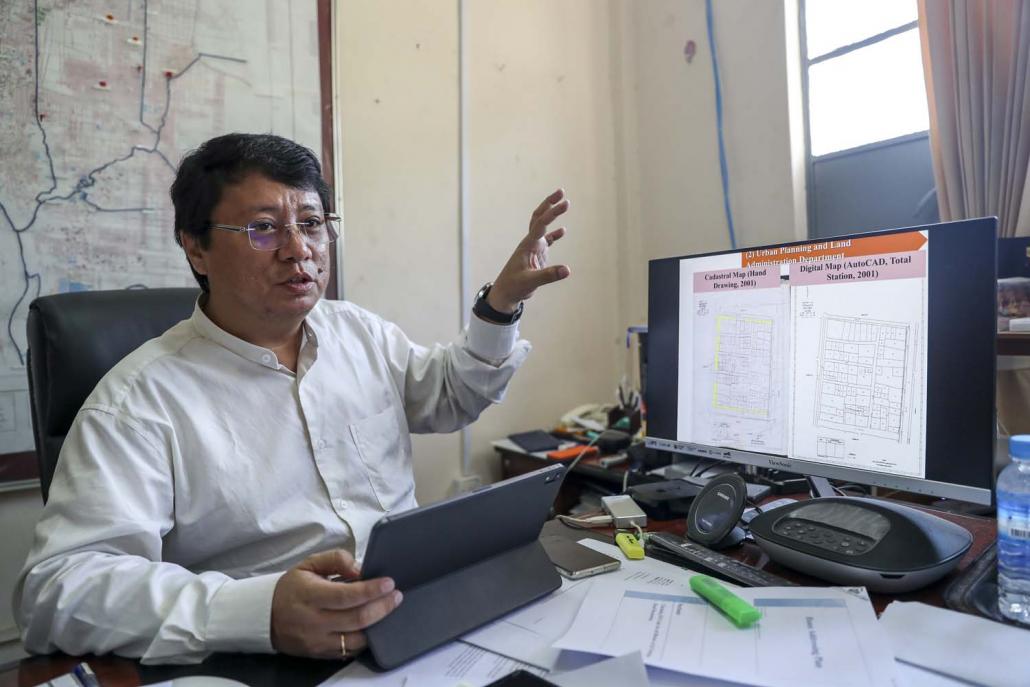
U Ye Myat Thu, Chief Smart City Officer for Mandalay and executive committee member of the MCDC. (Nyein Su Wai Kyaw Soe | Frontier)
‘On the right road’
Frontier found admirers of the current MCDC everywhere in the city, coming from all walks of life. They even included U Aung Maung, who was mayor of Mandalay when the Union Solidarity and Development Party was in power from 2011 to 2016.
“When we managed the MCDC, the people hated the municipal authorities. We tried hard but we were not able to succeed,” he said. “The city has improved and I’m glad to see it.”
The former mayor was keen to add that, in his time, the MCDC was often undermined by other branches of government and wasn’t allowed the same space and authority as the current municipal government.
“For example, in March 2016, only days before power was handed over to the new government, 134 plots of land in Mandalay were given away to some people with the endorsement of the [regional] government. The MCDC wasn’t even informed about it beforehand,” he said.
However, Ko Soe Min Swe, a civil engineer in Mandalay, said other branches of government often had to step in because of the MCDC’s own incompetence. “Like what is happening in Yangon now, the Mandalay [Region] government used to do what was supposed to be the work of the MCDC, because the MCDC didn’t work hard enough,” he said.
The turnaround is startling. Today, if you ask any passing Mandalaythar, or native of Mandalay, they are likely to tell you proudly that Mandalay is becoming a smart city – and they are likely to place the credit on the MCDC.
U Tin Ko Htay, a shopkeeper in the city’s Chan Mya Tharzi Township, told Frontier that Mandalay can now “compete against any city in Myanmar for its achievements in systematic municipal management.”
“Formerly, Mandalay was little more than a town,” Ko Aung Myint Htwe, a teacher in Aung Myay Thar Zan Township, said to Frontier. “Now, I feel that Mandalay is on the right road, despite the fact that many things remain to be done.”


